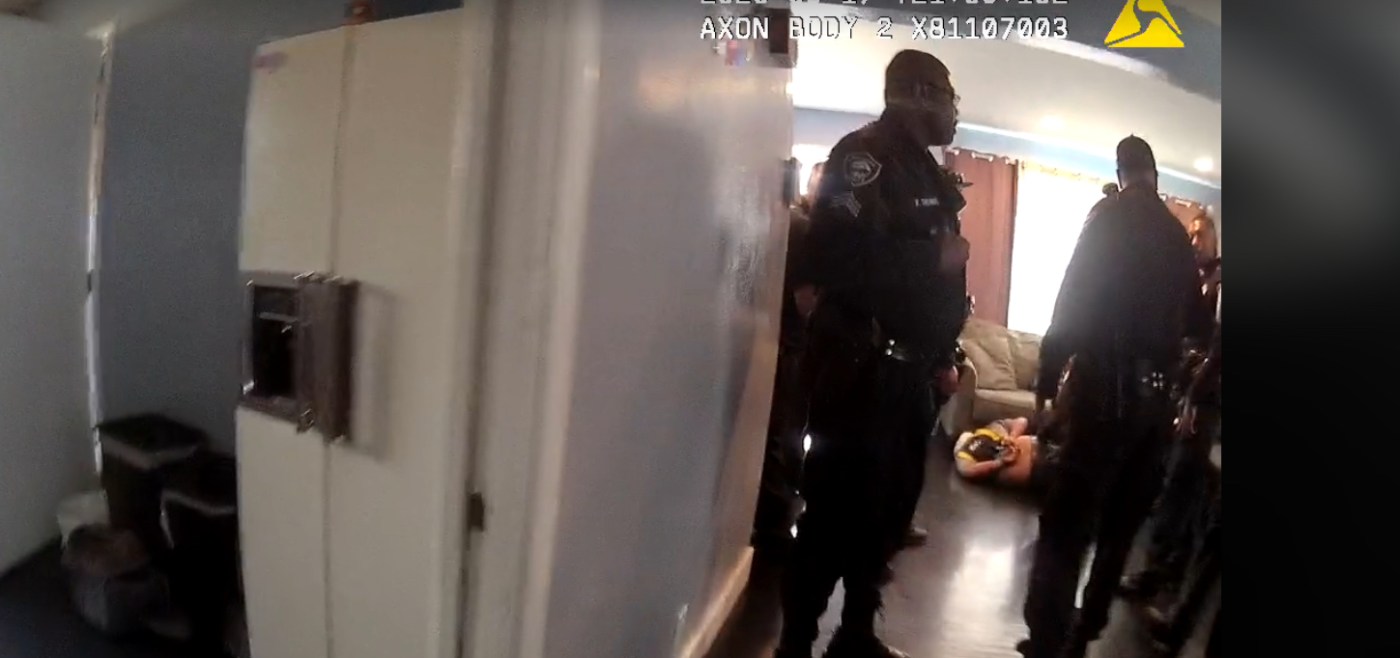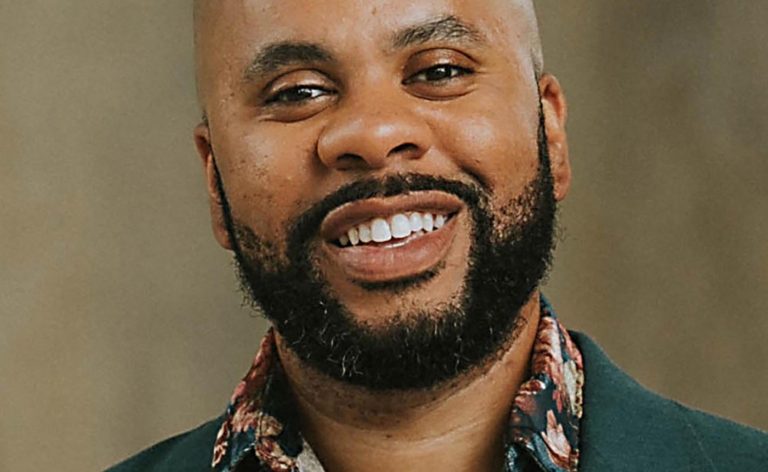RICHMOND — Ivan Gutzalenko was struggling to breathe in March 2021 as two Richmond police officers restrained him after stopping him for allegedly being intoxicated and bleeding from his hand. Gutzalenko told the officers they were hurting him, and bucked to try to get one of them off his back.
A paramedic viewed Gutzalenko’s action as aggression, and went to his ambulance to get a 5-milligram dose of midazolam, a sedative. When he returned three minutes later, Gutzalenko lay motionless. “He’s faking like he’s unconscious,” an officer said, according to footage of the incident.
The medic plunged the needle into his bicep. Gutzalenko’s heart stopped. The 47-year-old father was declared dead at a hospital.
Gutzalenko was one of seven Bay Area men, including another in Richmond, who died after paramedics injected them with midazolam while police struggled to control them, according to an Associated Press investigation that is shedding new light on forced sedation of people restrained by police. The practice has spread quietly across the nation over the past 15 years.
The AP investigation published Friday, in collaboration with PBS Frontline and the Howard Centers for Investigative Journalism, highlights 94 cases across the U.S. where a person died in police custody after medics administered a sedative. That is nearly 10 percent of the more than 1,000 deaths identified during the investigation of people subdued by police in ways that are not supposed to be fatal.
Sixteen of the 94 cases from 2012 to the end of 2021 happened in California, with nearly half of those occurring in the Bay Area, the AP’s data shows.
Scrutiny of in-custody deaths over the years has largely focused on the police’s role, but since the 2019 death of Elijah McClain in Colorado, newer attention is looking at paramedics, after criminal charges were filed against two medics in McClain’s death. One of them was sentenced on Friday to four years of probation after being found guilty of negligent homicide.
The AP’s database includes the deaths of Gutzalenko; 40-year-old Jose Luis Lopez-Rodriguez in Richmond in 2020; 38-year-old Jacob Bauer in Pleasanton in 2018; 36-year-old Carlos Margo in San Francisco in 2017; 45-year-old Marcellus Toney in Oakland in 2017; 40-year-old Darnell Benson in San Francisco in 2015 and 49-year-old Jonathan Mitchell in San Francisco in 2014.
The role sedatives may have played in each of the 94 deaths was impossible to determine, the AP reported. Medical experts told the AP the drugs’ impact could be negligible in people who were already dying; the final straw that triggered heart or breathing failure in the medically distressed; or the main cause of death when given in the wrong circumstances or mishandled.
All of the Bay Area cases involved medics working for private companies — most were employed by American Medical Response — and administering midazolam. The deaths were attributed to causes other than the sedative, and similar to the other cases across the U.S., some of them were officially attributed to “excited delirium,” a controversial diagnosis that has been widely abandoned by medical professionals.
No medics or police officers were criminally charged in the Bay Area cases.
Midazolam’s use on restrained people is not without controversy — in 2018, physicians in Australia warned against such applications after two in-custody deaths there.
The sedative is intended to calm people who are suffering a panic attack or behaving erratically. It is also commonly used in lethal injections, but not as a means to kill. Rather, it is the drug executioners often use to relax a prisoner’s nerves in an attempt to ensure they don’t feel pain as they die.
Use of the sedative was given to Gutzalenko to “quiet him down” during an episode of excited delirium, a Contra Costa pathologist testified at a coroner’s inquest into his death. His official cause of death was listed as “prone restraint asphyxia and cardiac arrest while under the influence of methamphetamine,” according to the autopsy.
Gutzalenko’s wife, a former critical care nurse, told the AP he would never have consented to receive midazolam that day.
“I know from being a registered nurse since 2004, you don’t administer a sedative to someone who is clearly already in respiratory distress,” she said. Her husband’s death has been devastating to their two teenage children, she added.
His death was an example of what experts called a dangerous practice of officers putting pressure on the backs and necks of detainees before and after they’re injected with sedatives. After stopping him, Richmond officers knelt on him during their struggle. According to a Contra Costa District Attorney’s Office investigation, officers removed handcuffs once “Gutzalenko’s face began to turn blue.”
“It’s a recipe for disaster, because you may have created a situation in which you are impeding a person’s ability to get oxygen,” Dr. Gail Van Norman, a University of Washington professor of anesthesiology and pain medicine, told the AP.
Lopez’s 2020 death was attributed to “excited delirium” and, like Gutzalenko’s, ruled to be accidental.
Lopez was also injected, but that dosing happened after officers used a stun gun on him, restrained and pinned him to the ground and struck him with batons during a domestic violence call in Richmond. One officer urged a paramedic to “calm him down” with an injection. Newly obtained video shows him going unconscious soon after the drug is applied. The paramedic is later overheard on video expressing shock over what happened, saying he’d issued the drug at least 10-15 previous times without incident.
The death of Toney in Oakland is one of more than a dozen cases reviewed by the AP where police asked for or suggested the use of sedatives.
Toney died in 2017 after being confronted by Oakland police following a traffic crash in the city’s Fruitvale District. Police repeatedly tased him before one officer asked paramedics to sedate him, because he was “fighting them vigorously and agitated,” according to a paramedics report obtained by this newspaper.
Once officers got him onto a gurney and tied him down with a four-point leather harness, paramedics placed him in an ambulance and gave him 4 milligrams of midazolam. His heart stopped beating just minutes later, before they could reach the hospital — forcing paramedics to pull to the side of the road and start CPR.
The Alameda County Coroner’s Office ruled his death a result of “excited delirium syndrome” in an autopsy report that made no mention of the sedative, instead noting that he showed signs of hypertensive arteriosclerotic cardiovascular disease, obesity and chronic cocaine abuse.
Toney’s widow, LaMesha Smith, still questions the paramedics’ decision to give her husband the tranquilizer.
“Why would you do that?” Smith, who later sued the city and received a $250,000 settlement, said Thursday. “Why would you even slow down the rhythm of the heart when it’s already been through much — so much trauma to the heart?”












